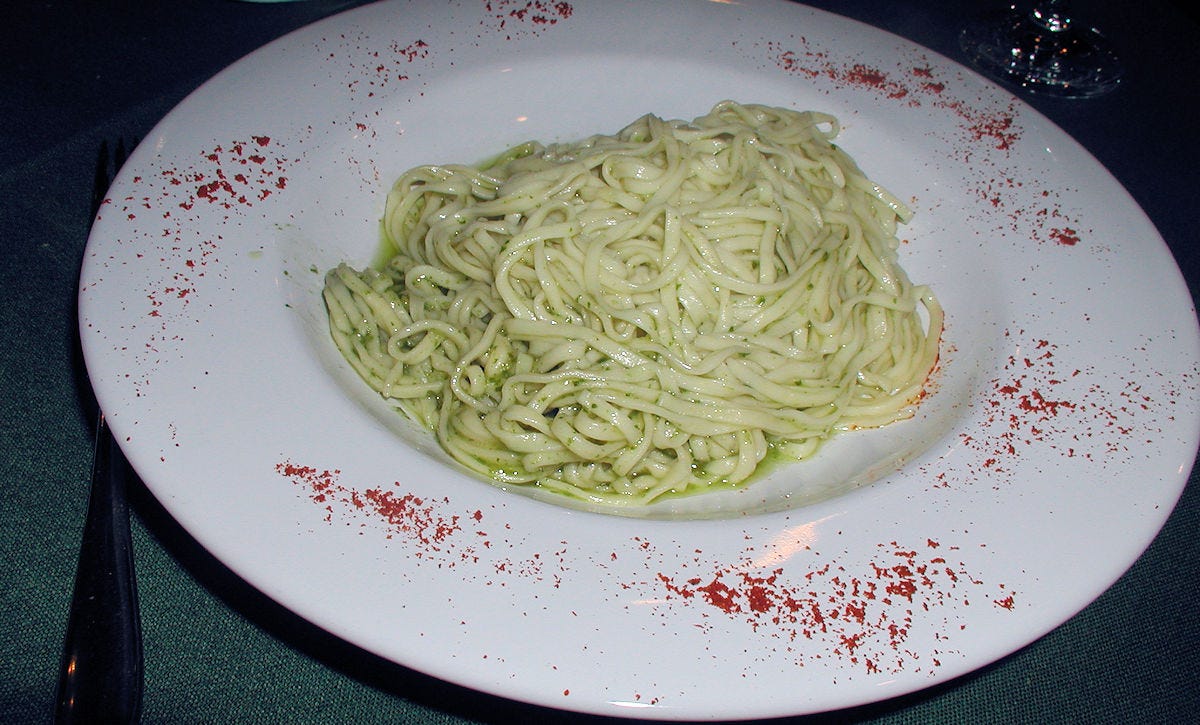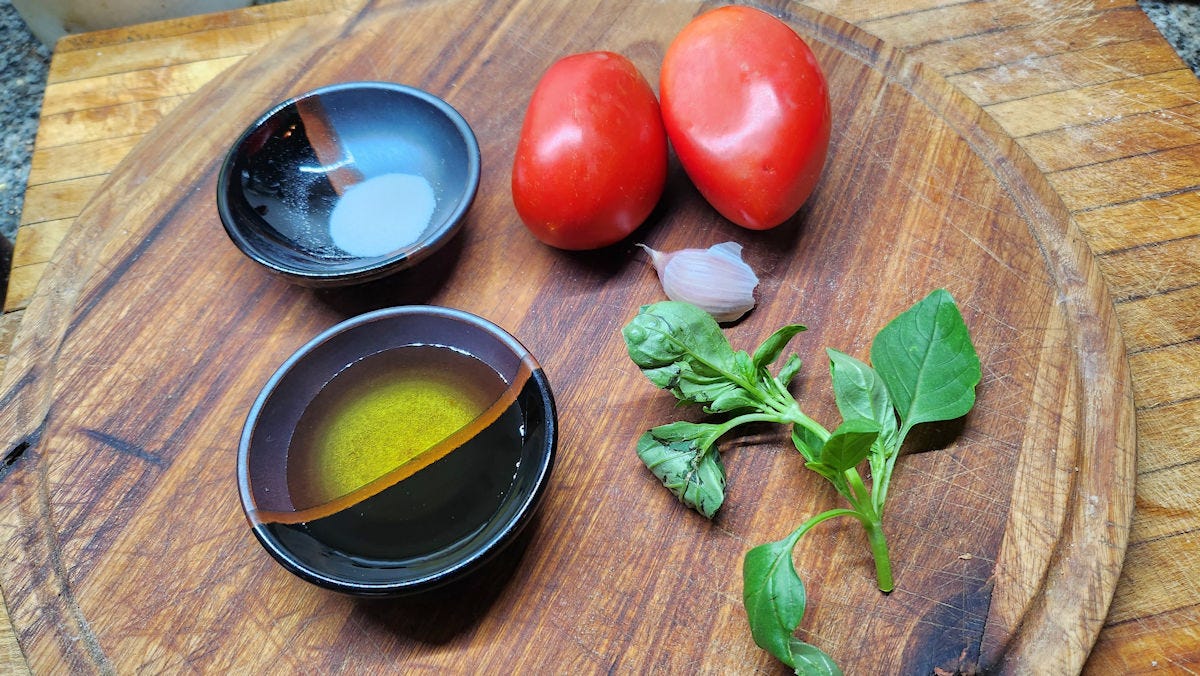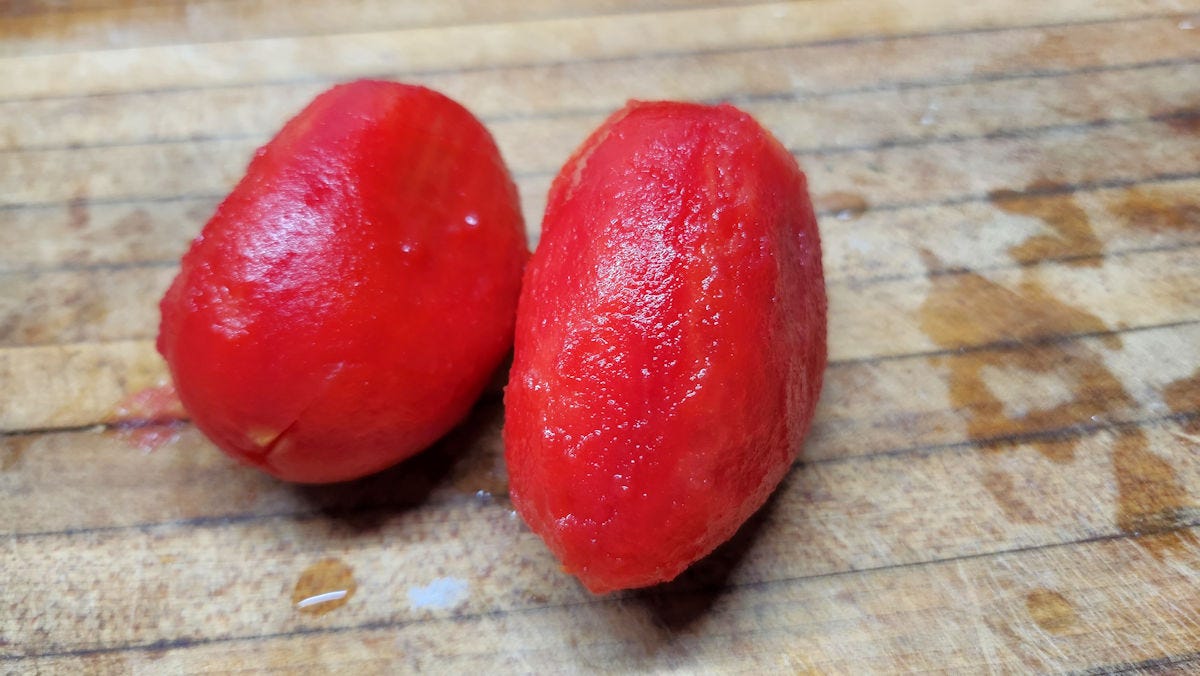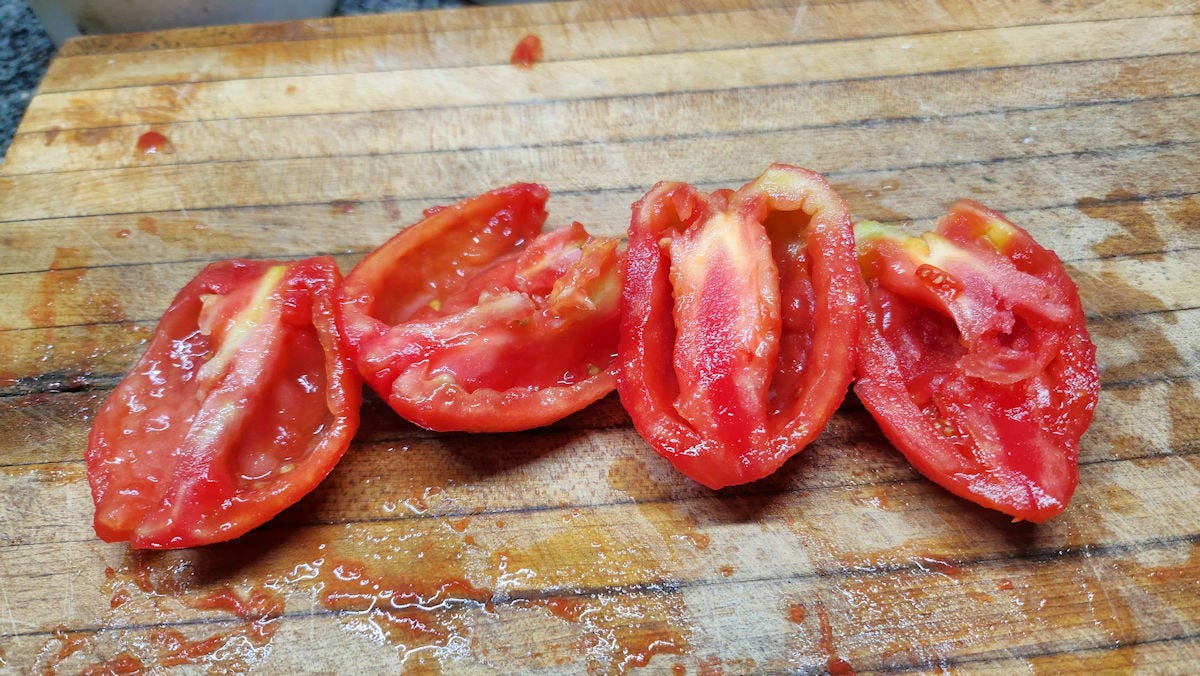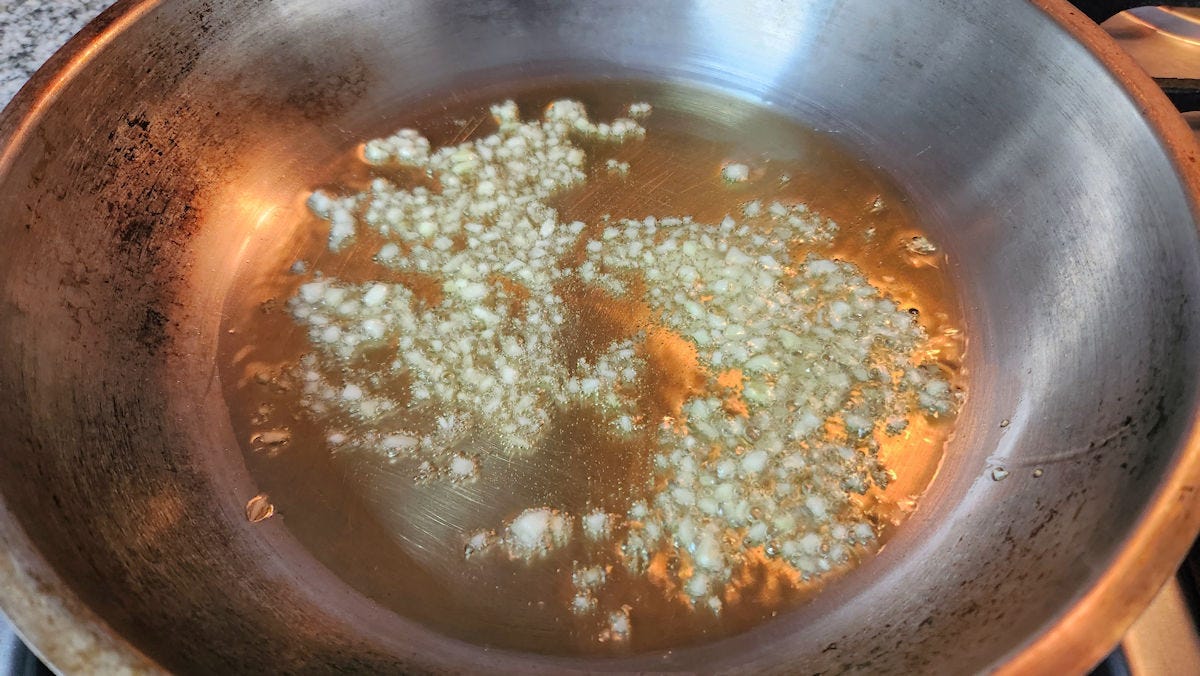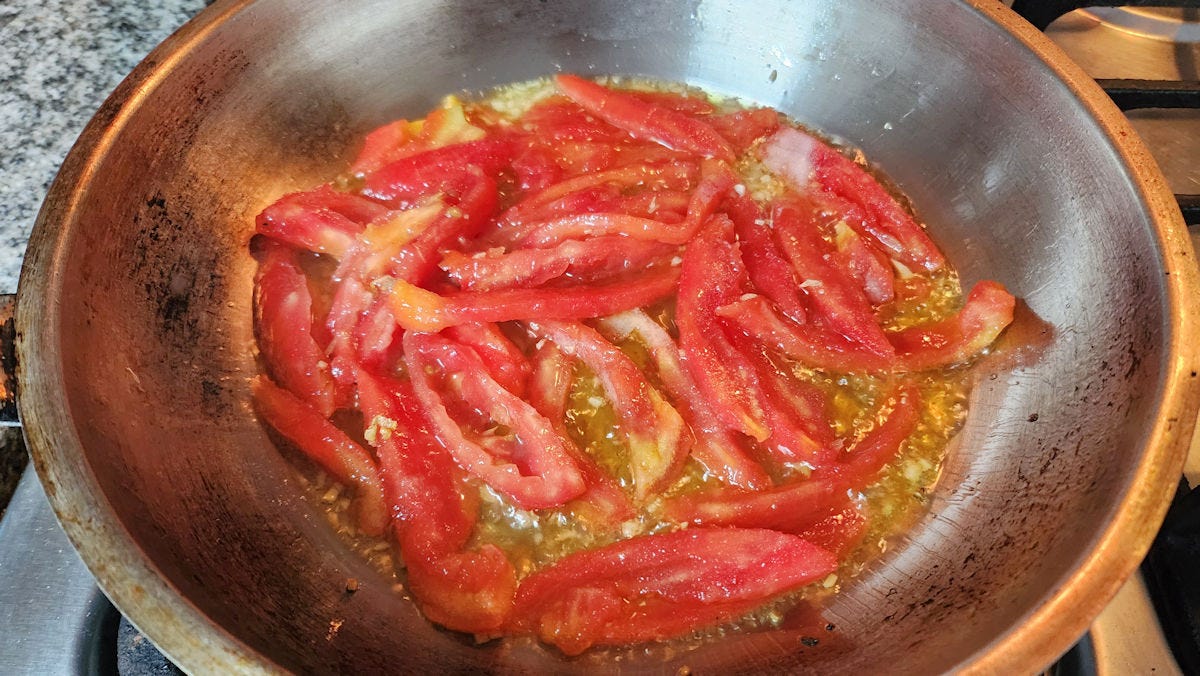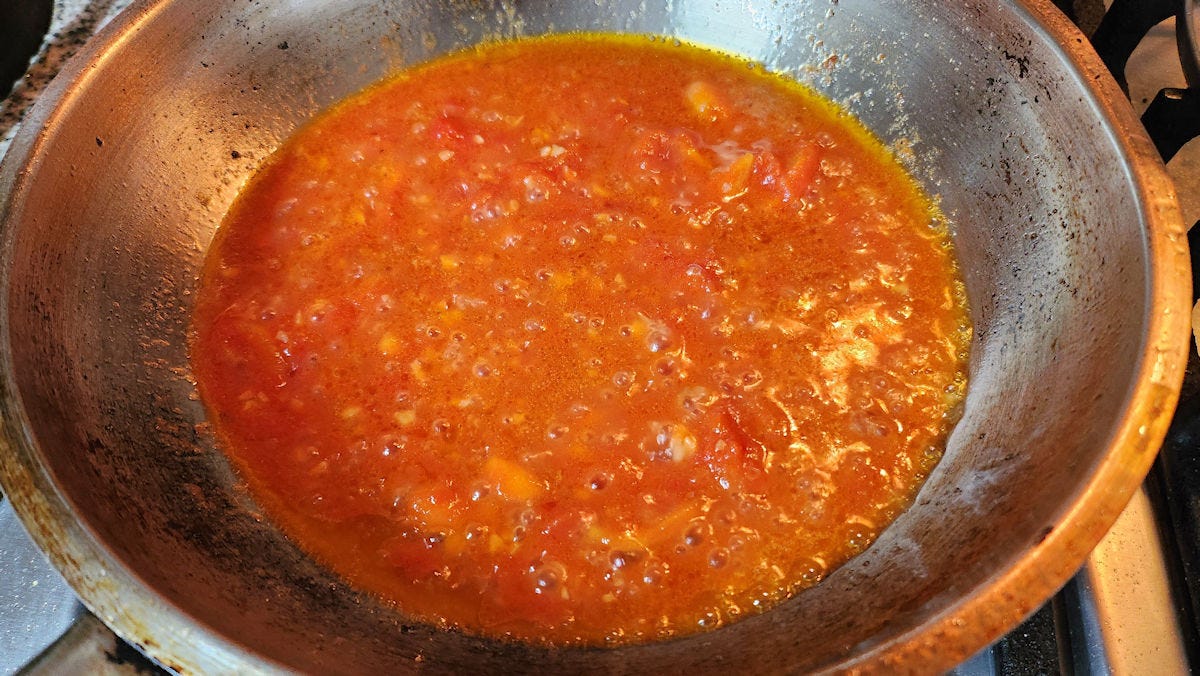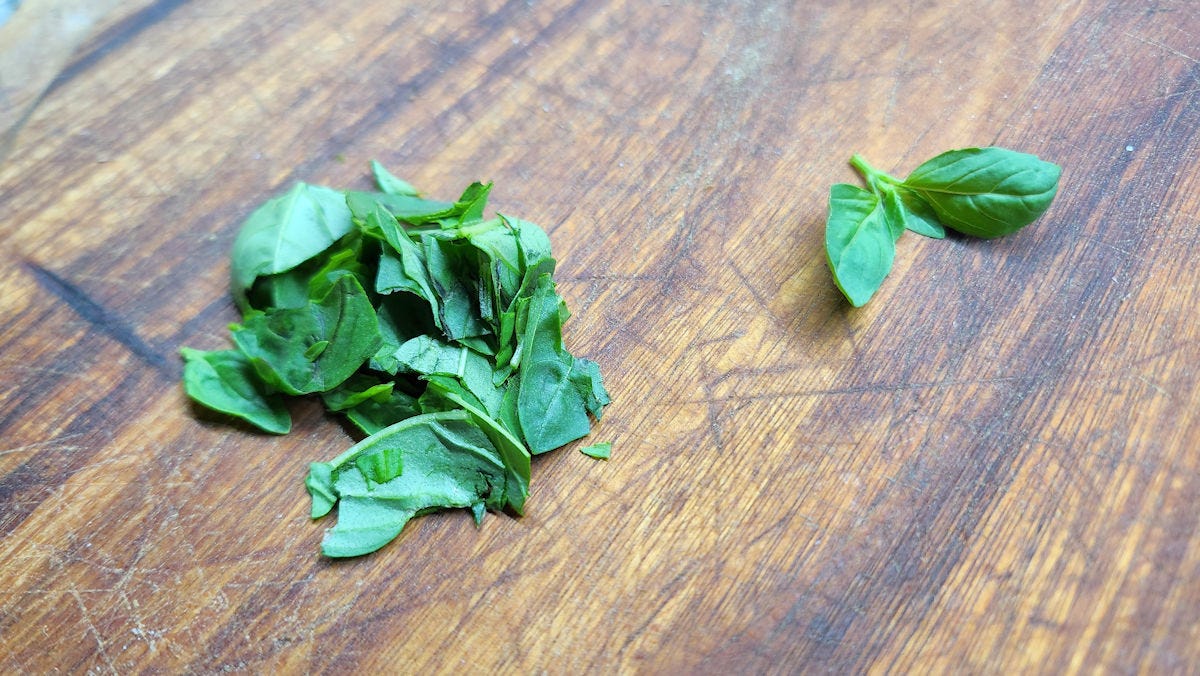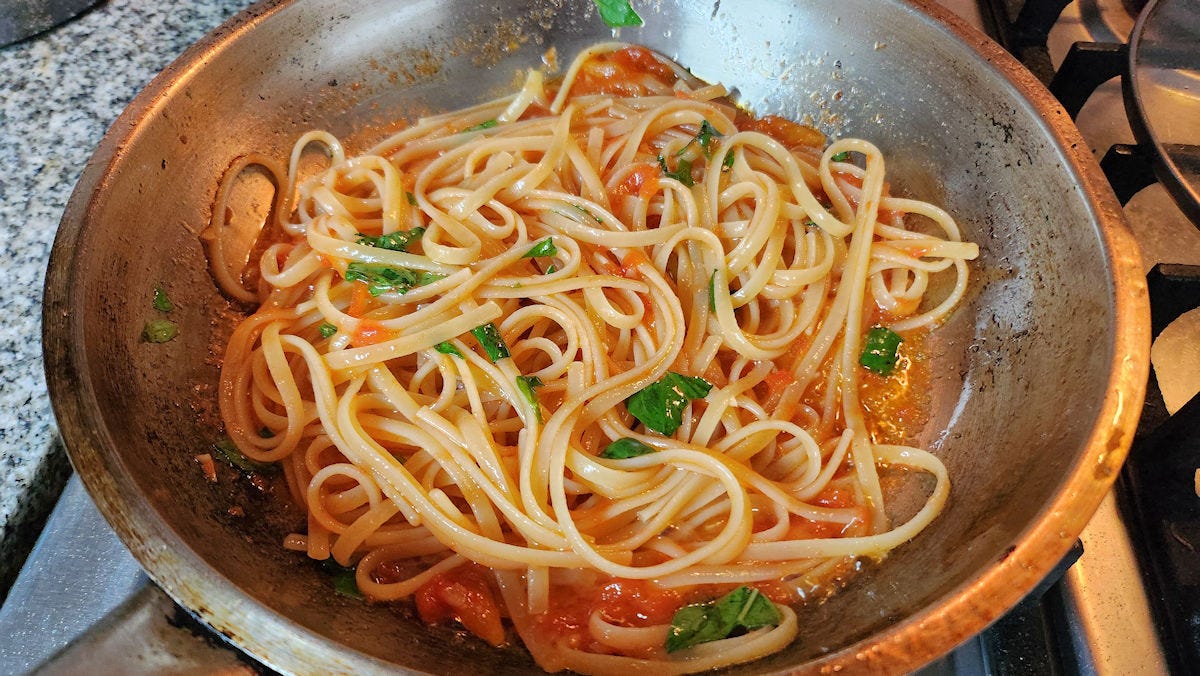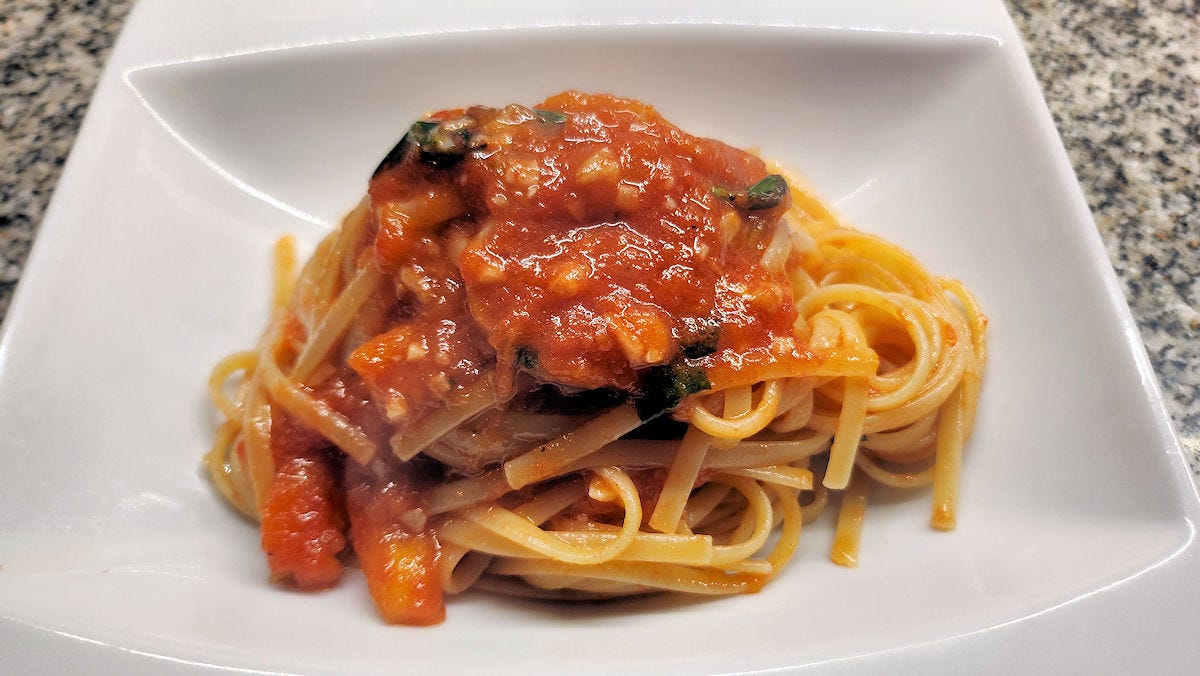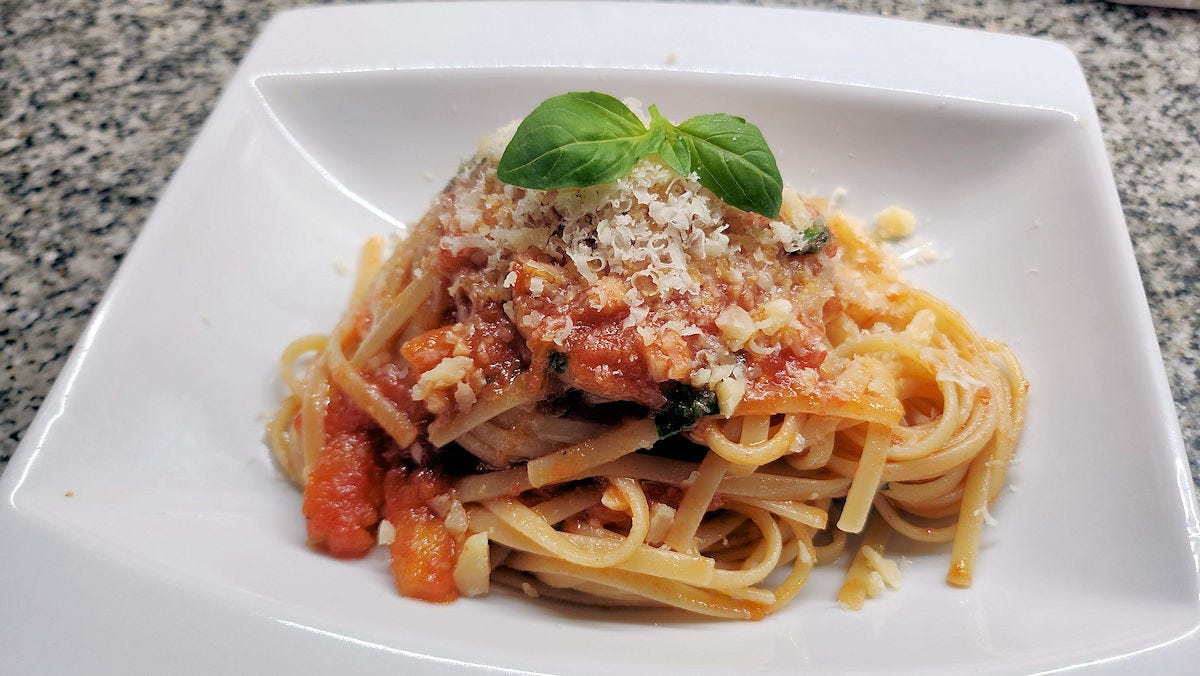Filet o'Tomato
In which we start our exploration of Argentina's pasta sauces
Every country these days has its own takes on pasta dishes. They have their origins in Italian pasta, but have been adapted through a combination of availability of ingredients, and their local substitutions, and a sort of culinary telephone game. I am reminded of my early days in Buenos Aires, searching for something that could charitably be called pesto and more often finding things like these….
This was touted as fettuccine, which it obviously isn’t, and the pesto consisted of burnt bits of chopped garlic and dried basil flakes in vegetable oil spooned over the top.
Or these spaghetti a la chitarra partially tossed with nothing but cheap olive oil and finely minced basil flakes - no garlic, pinenuts, salt, pepper, or cheese. Pesto, in many restaurants here, has gotten better since those dark days.
But today, I’m going to start in on the “tomato variations” of Argentine pasta sauces with the simplest of them all, the filetto. It is, basically, what Italians would probably call salsa di tomate. The filetto name, as best anyone seems to know, is based on the Italian filetto di pomodoro, though that’s not a pasta sauce, it’s more of a chilled salad of tomatoes, garlic, salt, pepper, parmigiano, and olive oil. The filetto refers to cutting the tomatoes into strips, or cheeks. A filet of tomato, so to speak. This is one of those sauces with so few ingredients, it’s easy to screw up. Less is more, or simplicity is perfection, or something of that sort.
And this is it. Now, these days, I’d venture that most people probably just open a can of peeled and seeded tomatoes, either whole, crushed, or cubed, but let’s do this the traditional way. This, by the way, is a portion for one. Two plum tomatoes, a clove of garlic, a sprig of basil, a couple of tablespoons of olive oil, and about 1/8 teaspoon of salt (more salt will, as always arrive with the pasta water). Off-camera, a piece of parmigiano to grate over the top.
Key points, that while some people violate and make this into a cross between this sauce and the next one we’ll get to… no pepper and no onion. Some people do put a bay leaf into the pan while cooking the tomatoes down and then remove it. I don’t think it adds anything worthwhile to the sauce.
For those of you who do this regularly, just skip ahead, but I’m used to getting emails and messages after some of these posts with a “how do I?” for things that I think of as basic. So, how do you peel and seed tomatoes? The first thing is to take out the core at the stem end, and the second is to make a cross-cut through the skin at the other end.
Well, really the first thing was to get a pot of water onto a burner and get it boiling. Then drop the tomatoes in, bring it back to a boil, and boil for 30 seconds.
Remove the tomatoes and plop them into cold or iced water. I usually just drain them, and then run them under a cold tap for a minute or so. The skin will start to split and wrinkle off.
It should be very simple to just pull the skin off. Sometimes a bit will stick, and a paring knife makes a quick and easy way to peel that bit.
Cut them in half and scoop the seeds out with your finger or a spoon. For bigger tomatoes you might cut them in quarters.
And, cut them into strips, our filets. Also, finely mince the garlic.
Put the olive oil in a pan over lowest heat, add the garlic, and cook for about a minute. You don’t want it to brown, so if you see it starting to, move on to the next step. Also, get your pot of salted water onto a burner to boil the pasta in.
Add the tomato filets and the salt and continue to cook over lowest heat, stirring now and again. A few minutes into this is the time to drop your pasta (if dried pasta, if it’s fresh, wait until this is almost done) into boiling salted water.
After about ten minutes it will look like this - the tomatoes will be falling apart and the whole thing looks “separated”. Not to worry.
Add a ladle of the pasta water - it’s got that starch to emulsify the sauce, and the salt to season it.
I use a rubber spatula or wooden spoon to stir it vigorously. It’s always a fascinating sight when that starch brings it all together into a smooth, almost creamy sauce. At this point, if you’re not a multi-tasker, or you just want to have the sauce for later, you can remove this from the heat and just let it sit. It’ll be fine. You can even refrigerate it for a day.
At some point during the cooking, tear your basil leaves into pieces. Leave one cute little top bit for garnish.
Add the pasta and the basil to the pan. Mix it up well. Taste it, check the texture on the pasta - is it al dente? Add a splash more of the pasta water if you need it for either salt or “clinginess”.
And, you’re done other than plating it up.
You can dump it in a bowl, or twirl it up, or whatever you like. Make sure to get whatever sauce is left in the pan atop it all.
Grate the parmigiano over it all. If you like cheesier pasta, you can pre-grate a bit of it and add some into the pan at the same time you add the pasta and basil. Garnish with the reserved basil to make it pretty. You’re worth it.
And, eat.
Just like a cacio e pepe, sometimes the simplest dishes are the best. This is one I could happily eat over and over… and, I do.



